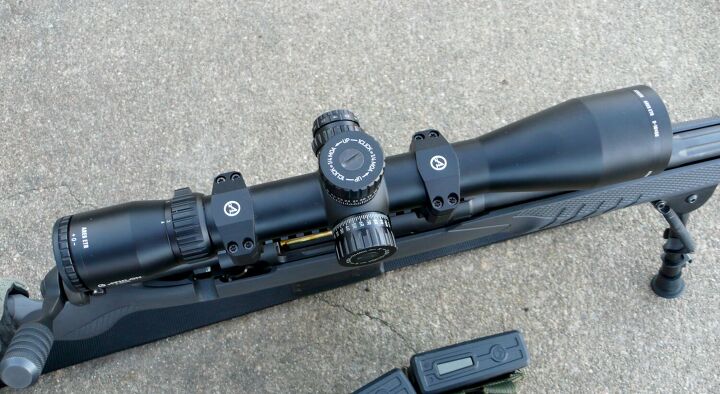Athlon Optics has really made some waves in recent years, offering quite a variety of options between budget scopes around the $200 mark, all the way up to the $2000 spectrum. Athlon’s Argos 1-4x caught my eye when Adam S. reviewed it for AllOutdoor.com, so when I was looking to set up a rifle to eventually use as a sniper rifle for my department, I wanted to give Athlon Optics a try. One such optic was the Athlon ARES ETR 3-18×50 with a 34mm tube and UHD, extra-low dispersion glass. Athlon also let me use a set of their Precision Scope Rings as well.
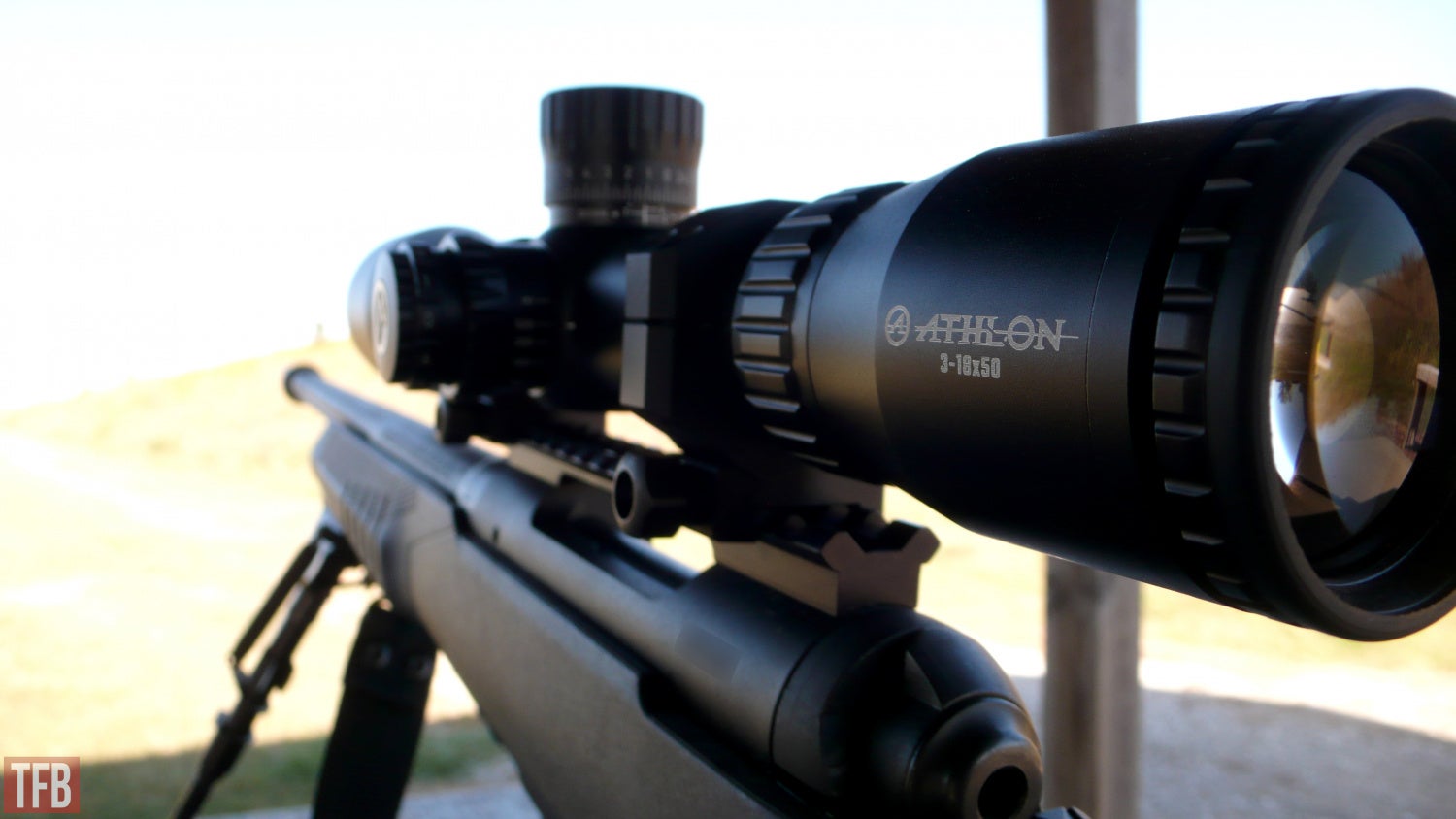
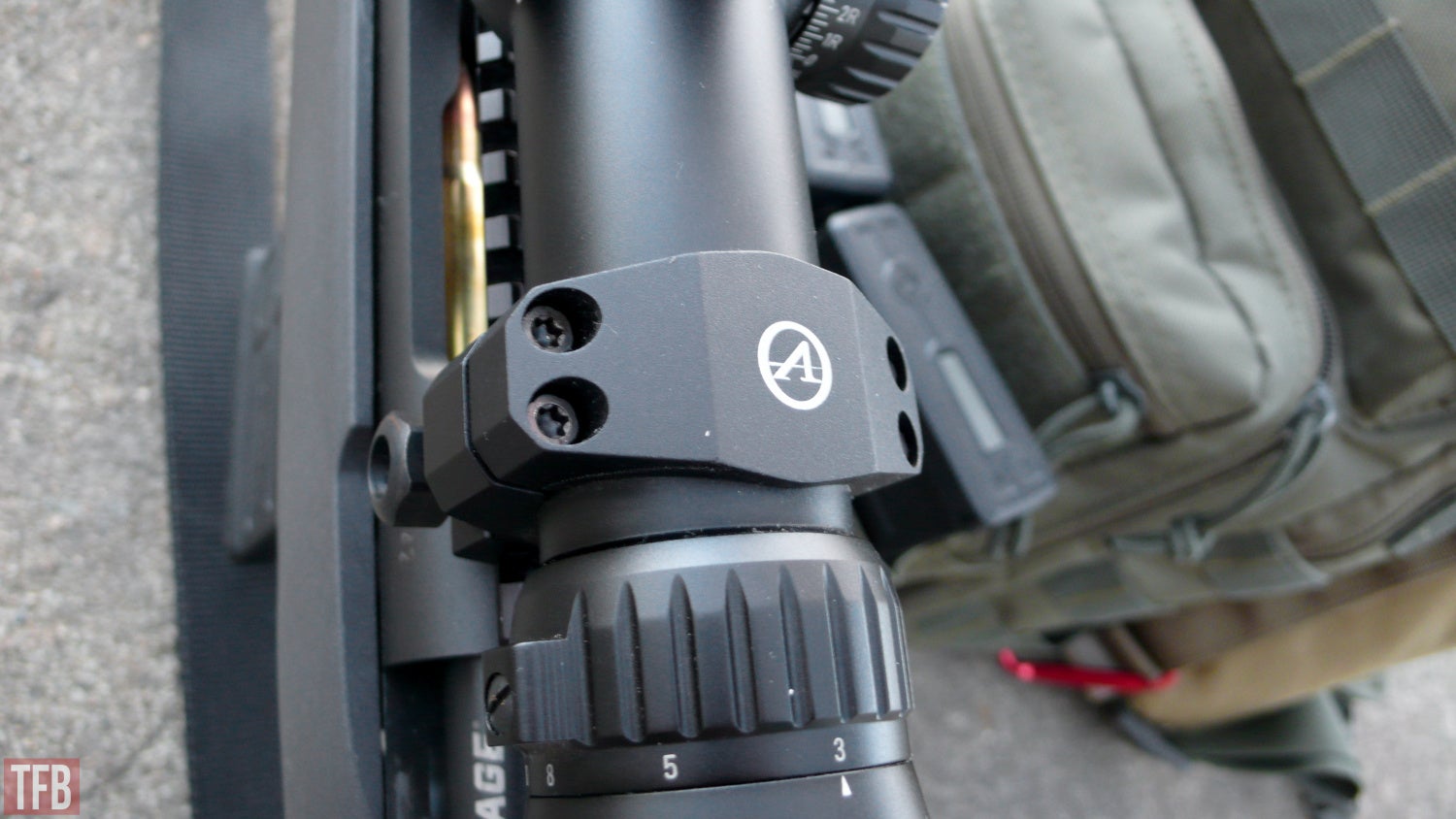
ATHLON ARES ETR 3-18X50: INITIAL IMPRESSIONS & SPECS
The Athlon ARES ETR 3-18x is a one-piece aircraft-grade aluminum body with a black matte finish, a beefy 34mm main tube and a 50mm objective lens for more light transmittance. The left turret houses the parallax adjustment and illumination knobs, which work independently of each other. The parallax is adjustable in finer distances from 10 to 200 yards, then jumps to 500, then infinity. The illumination knob has brightness levels from 1-6, with OFF positions in between each setting, which I really liked. Setting my standard OFF position between two commonly used brightness settings is pretty handy when you just need a bit more contrast between the reticle and target.
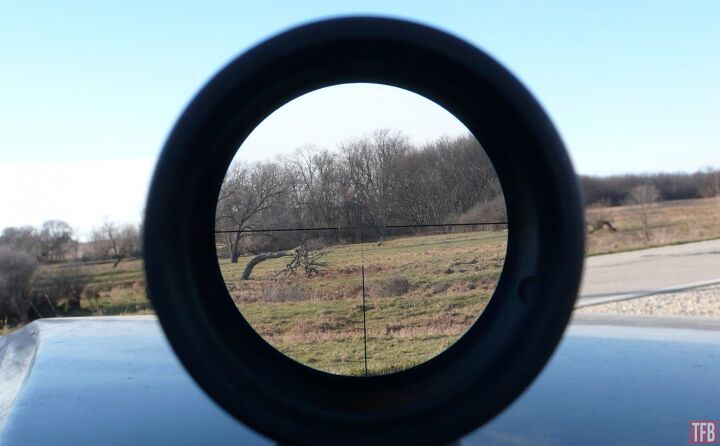
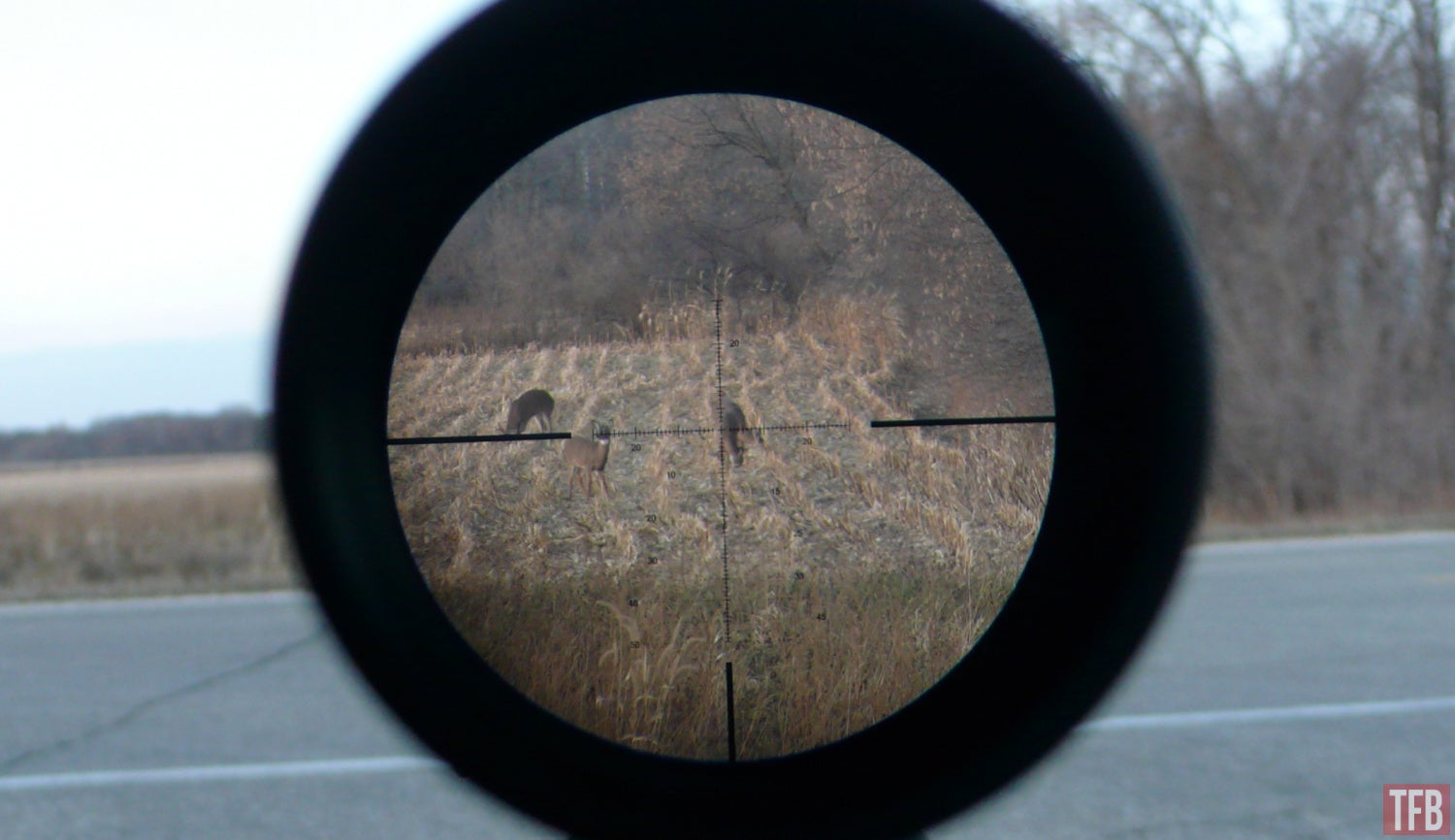
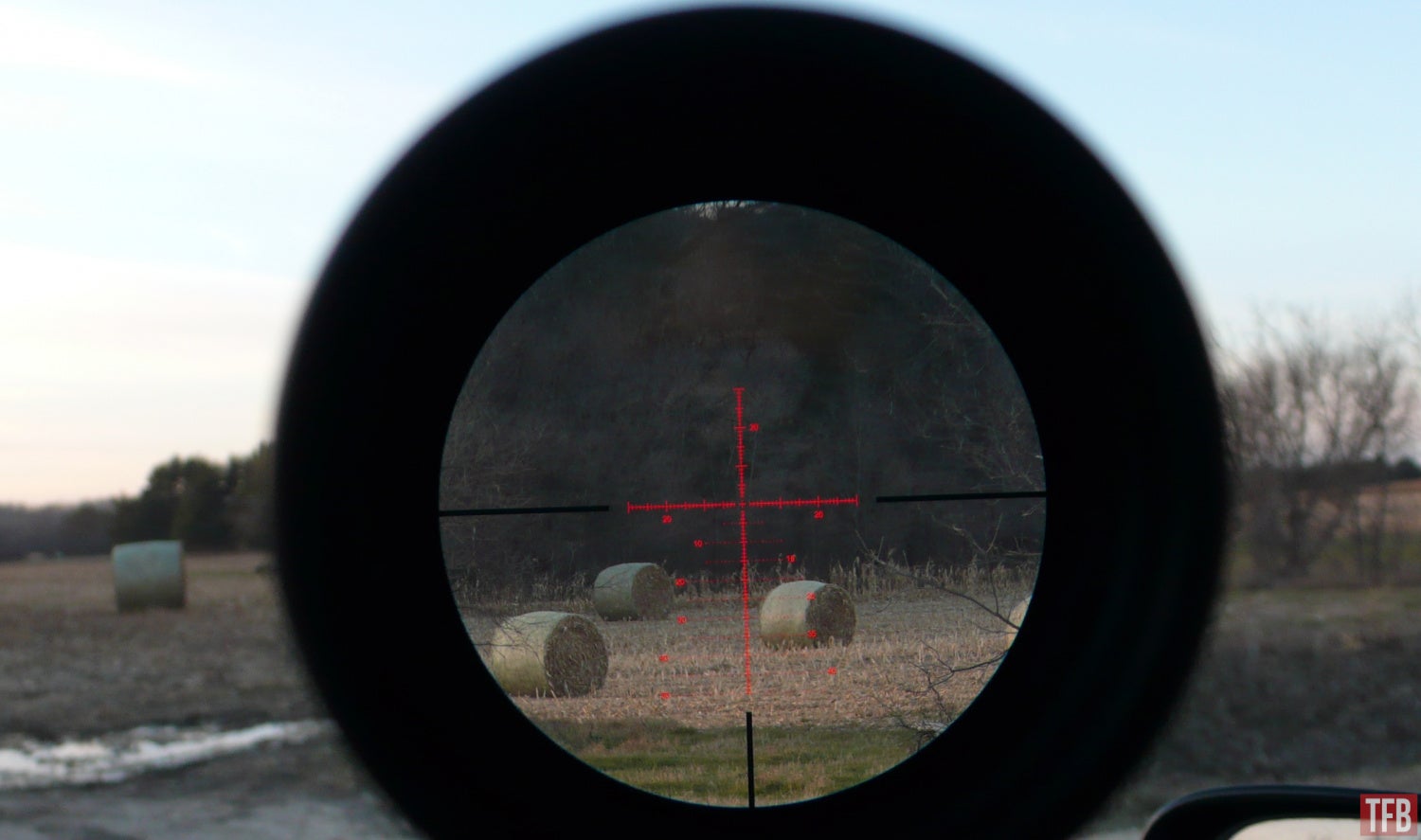
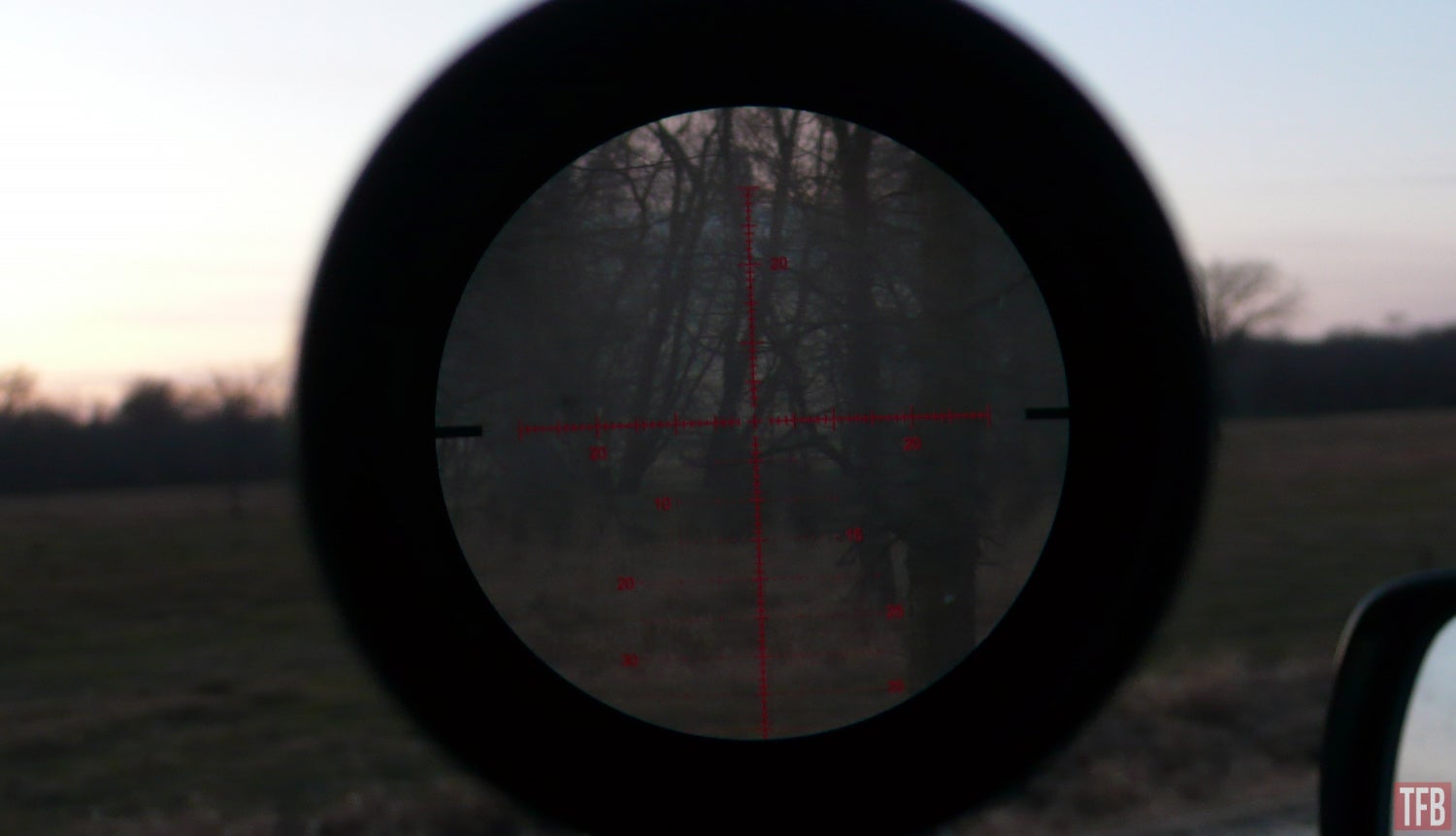
The Athlon ARES did well in low light, and the Illuminated Reticle helped contrast the shadowed forest.
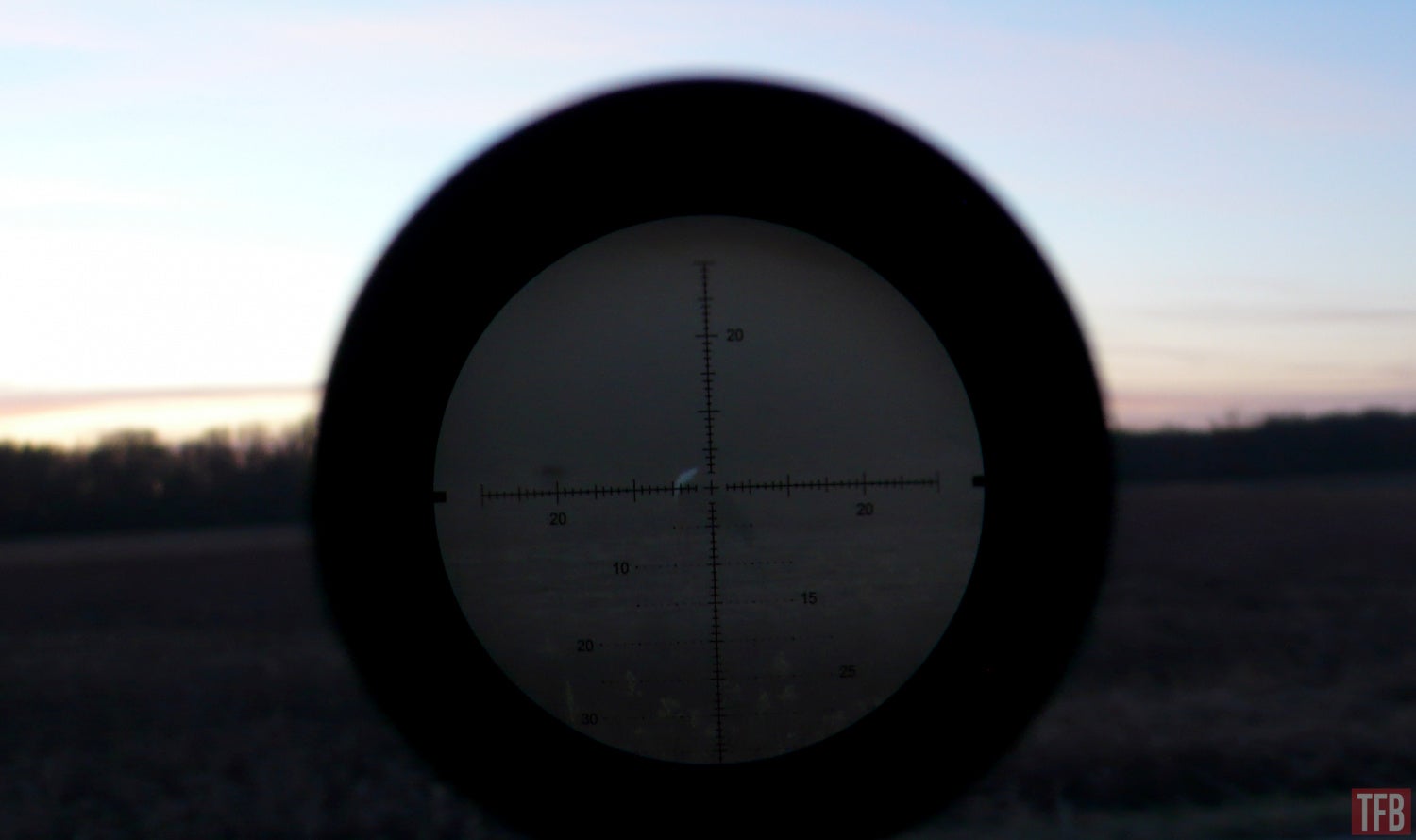
Whitetail deer around 200 yards just after sundown.
As per usual, the top turret adjusts the elevation, while the right turret adjusts the windage. In the case of the scope I tested, the turrets and reticle marks are all in Minute of Angle (MOA), however, Athlon offers this same scope with MIL turrets and reticles as well. The windage knob is lockable by pressing it in toward the tube, and to adjust it, you have to pull it away from the tube. Both turrets are easily removable for resetting to zero.
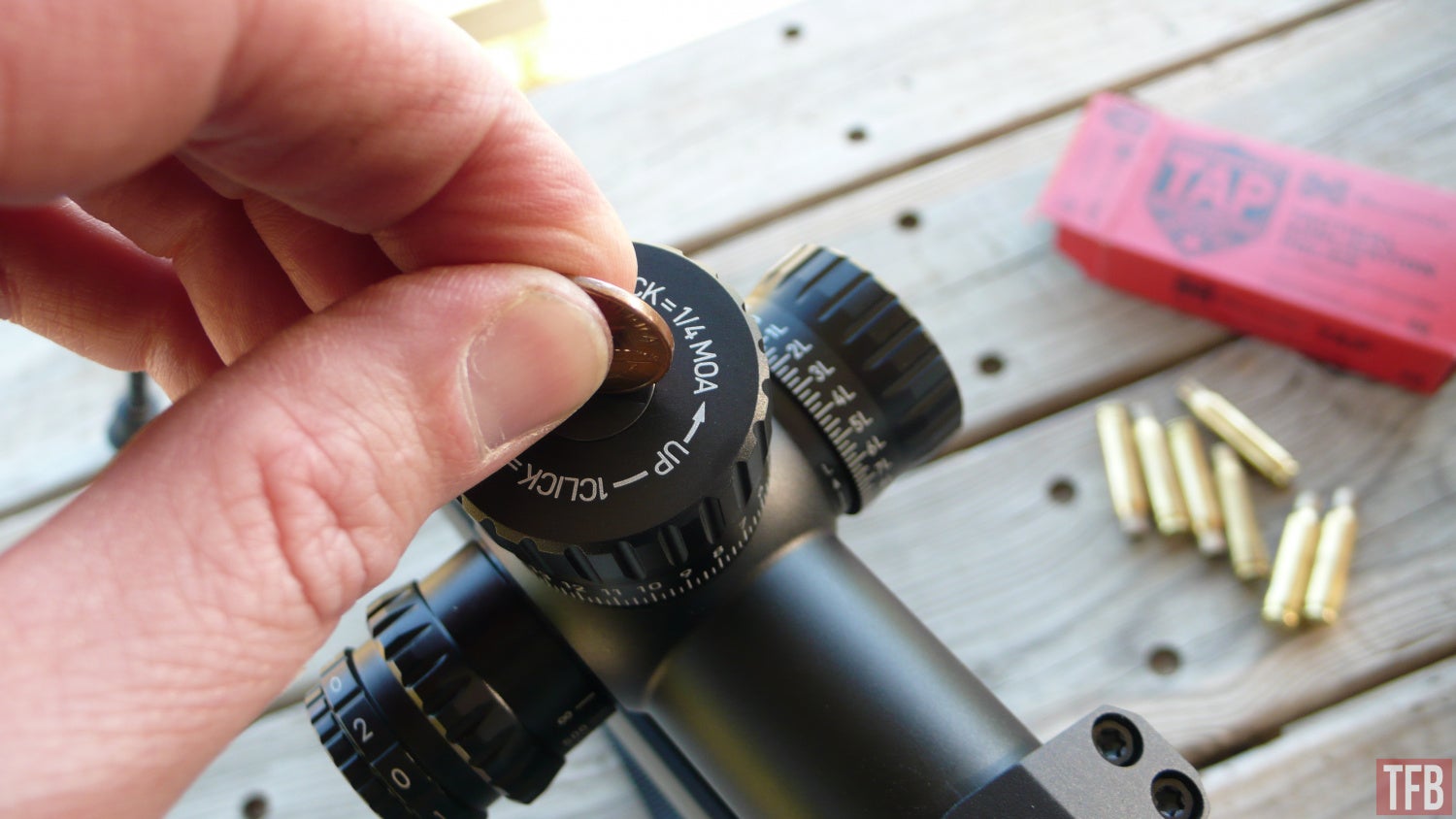
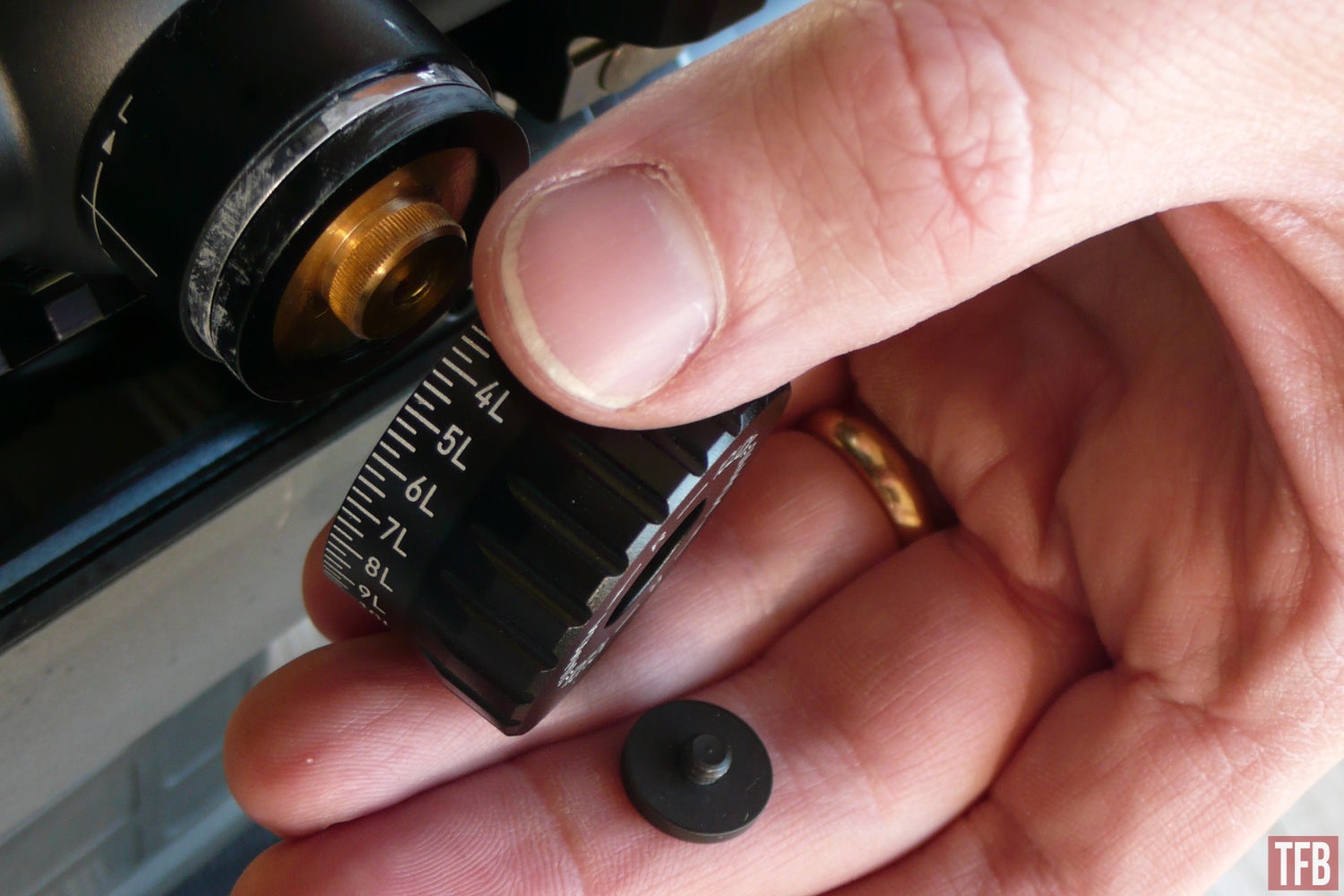
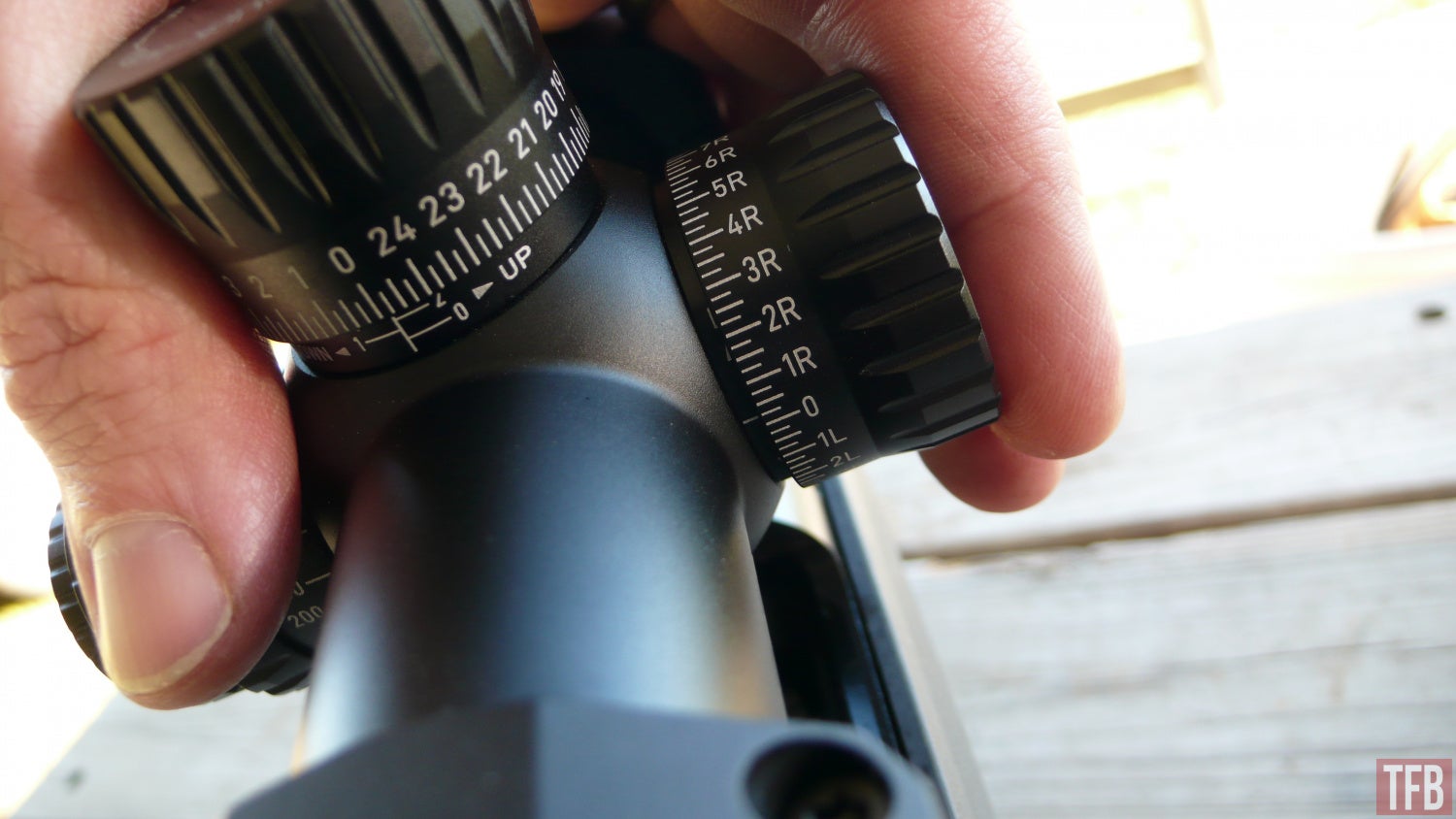
Windage turret in the locked position.
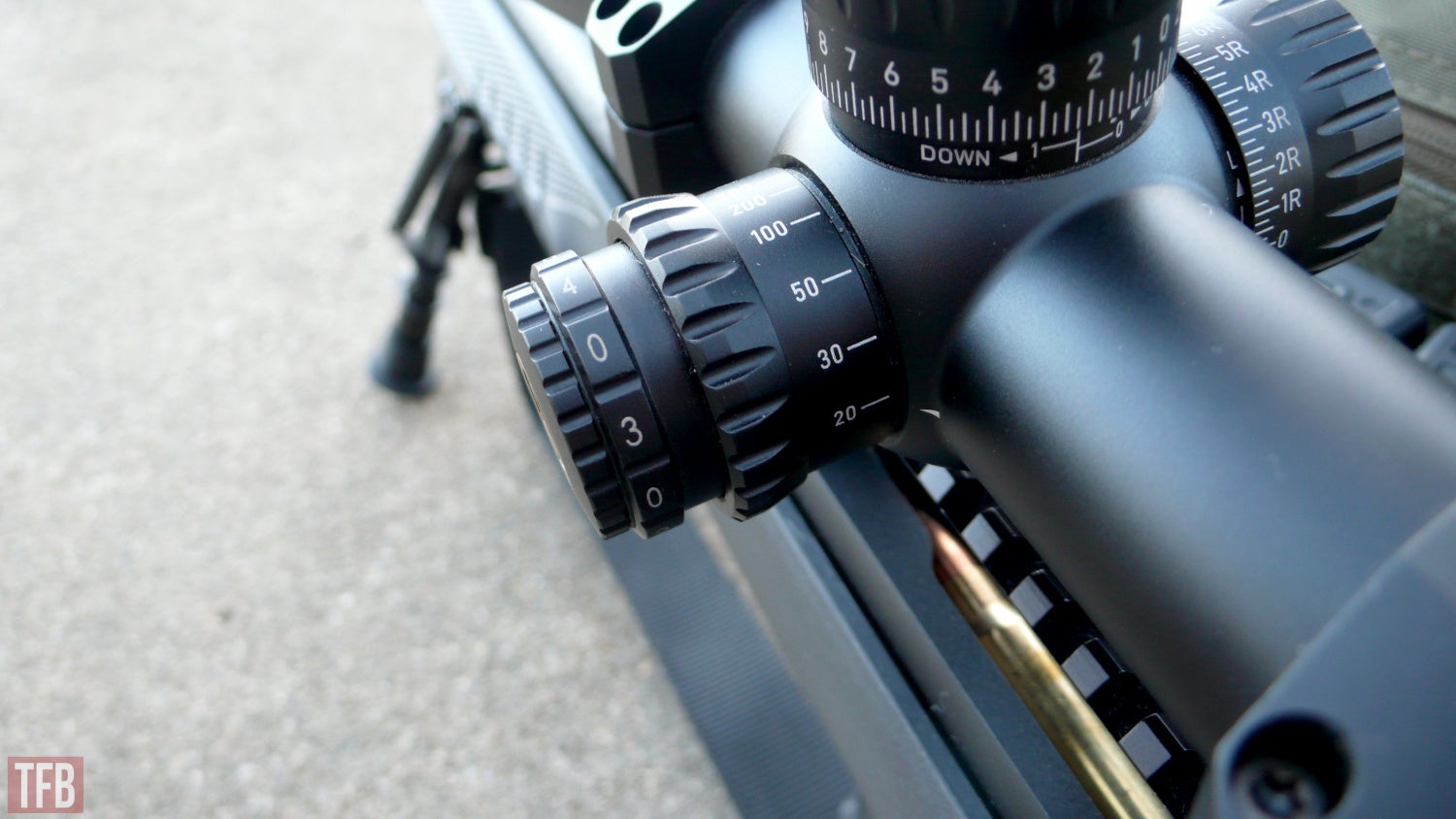
Some readers will be sad to hear that the Athlon ARES line is made in China, but that’s never bothered me so long as it works as advertised. The image through the UHD glass was perfectly crisp, with clarity from edge to edge and no separated lines or colors were to be found.
| Magnification | 3-18 |
| Objective Lens Diameter | 50 mm |
| Reticle | APLR6 FFP IR MOA, Glass Etched |
| Surface Finish | Matte |
| Lens Coating | Advanced Fully Multi-Coated |
| Extra Coating | Xtra Protective Coating |
| Tube Material | Aircraft Grade Aluminium |
| Tube Diameter | 34 mm |
| Eye Relief | 3.7″ |
| Field of View @100 yards | 39.2-6.65 ft |
| Click Value | .25 MOAL |
| Adjustment range per rotation | 25 MOA |
| Total Elevation Adjustment | 110 MOA |
| Total Windage Adjustment | 80 MOA |
| Turret Style | Exposed Elevation/Locking Windaget |
| Parallax Adjustment | Side Focus – 10 yards to infinity |
| Purging Material | Argon |
| Length | 14.2″ |
| Weight | 31.4 oz |
RANGE TIME WITH THE ATHLON ARES 3-18X50 RIFLE SCOPE
I pared the Athlon ARES scope with my Savage 110 Tactical in .308 Winchester for the review and the sniper school. One issue I had early on was that even though I had tightened the rings to spec, about 18 to 20 inch-pounds, I noticed that the ring tops had loosened and the scope was edging backwards under recoil after about 100 rounds or so. As a field expedient remedy, we used blue Loctite to “monkey tightness” according to the instructor, and the rings held fine for the remaining 400ish rounds. The cross bolts that lock onto the Picatinny rail were also tightened to spec and never loosened.
During the sniper school, we covered some challenging drills from 5 to 100 yards, so the lower end of the magnification range really paid off up close, especially during timed strings from prone to kneeling, and standing positions. Dialing it way down helped to reduce the added movement from my body, and the APLR6 MOA Reticle was useful and quick up close and personal so I had reference points after obtaining our DOPE at those ranges.
The reticle is well laid out, with plenty of MOA marks for hold overs and hold unders. The Christmas tree style marks spreading out and downward from the center of the crosshairs can be helpful in wind, though the Brownells range we used was protected enough that we didn’t really have too much wind on the range itself. The numbered MOA marks are spread out in fives, with the evens on the left of the tree and the odds on the right. The top of the reticle affords 30 MOA of hold under, while the lower half has 50 MOA of hashed out hold overs.
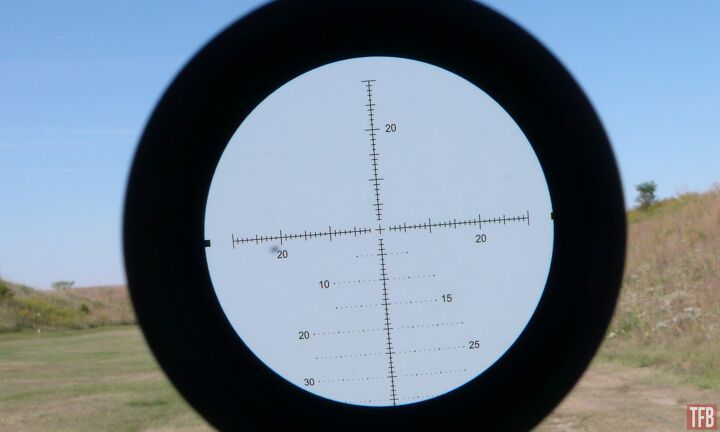
The higher end, 10-18x magnifications were helpful on the 500-yard range, although the eye box was getting tight at 18x, not a deal-breaker but I found that I preferred to step it down just a hair to alleviate it. While gathering drop data, we started from 200 yards from the target and then moved back in 100-yard increments back to the 500-yard line, where I was able to shoot a 0.3 MOA group. We were also given the challenge of shooting at a 5-inch spinner plate on the first try, so I was pleased when I watched the target spin and heard the “clink” to confirm my success.
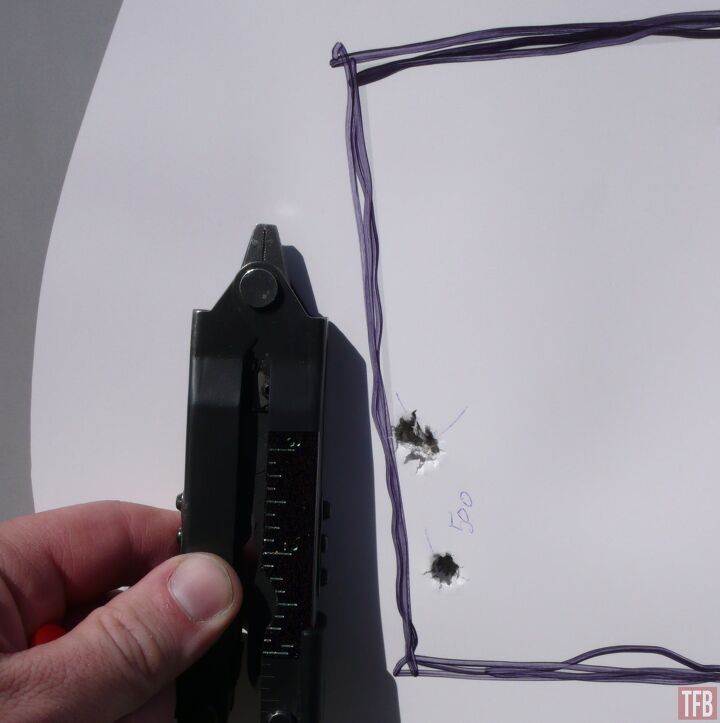
On the longer distances, we were using the turrets to dial in the impacts. A further testament to the trio of the Athlon ARES, the Savage 110 Tactical, and myself, was the final timed course on the 500-yard line, working with the instructor as the spotter calling out 5-inch steel targets at 100, 200, 300, 400 yards, while the final 500-yard target was a standard IPSC silhouette spinner. I shot it clean without any misses, and even though I don’t remember my time, I didn’t take more than what was necessary to clarify which target to shoot at and dial my turrets.
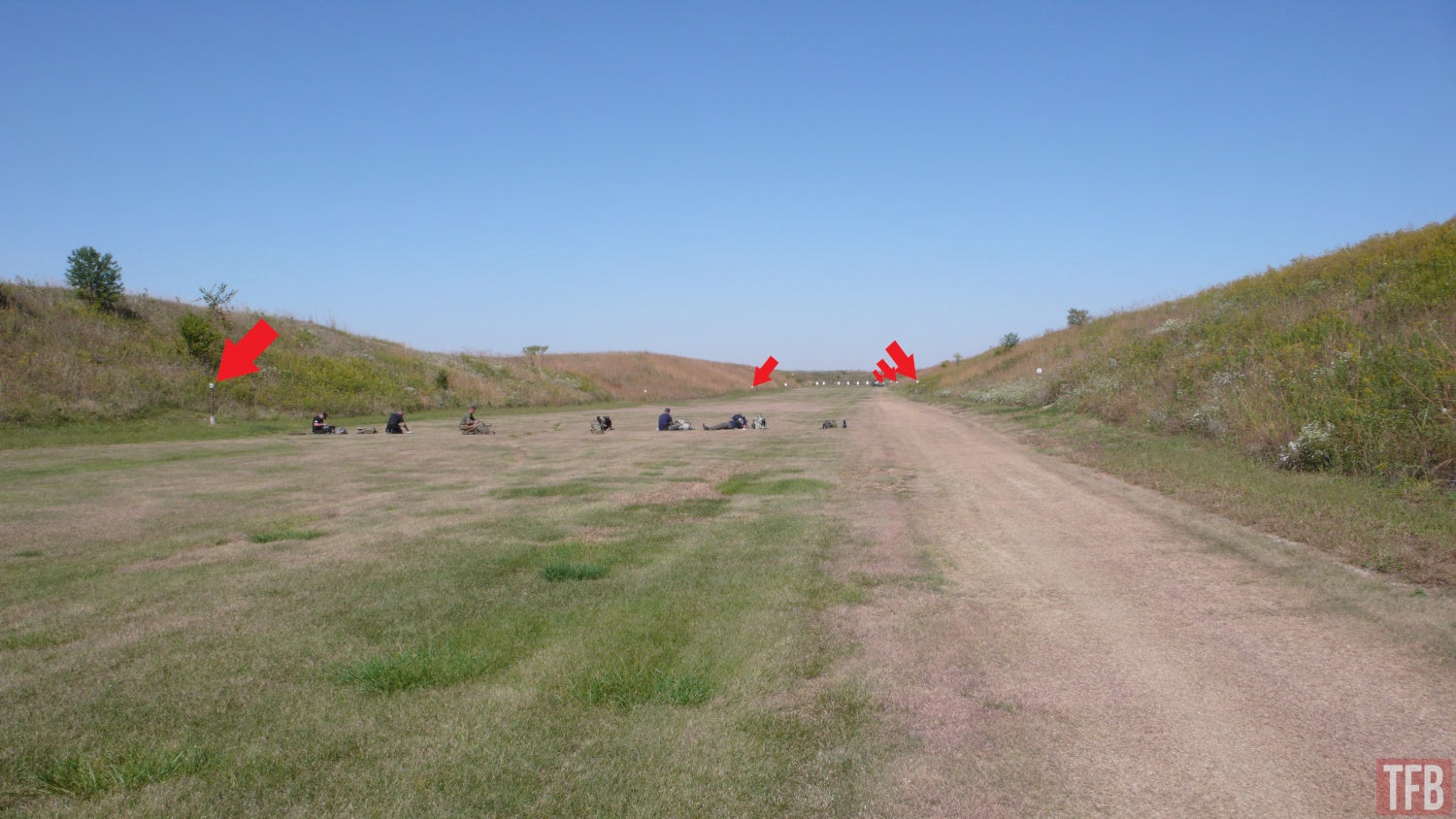
Brownells’ 500-yard range. The arrows show the alternating targets for the final test.
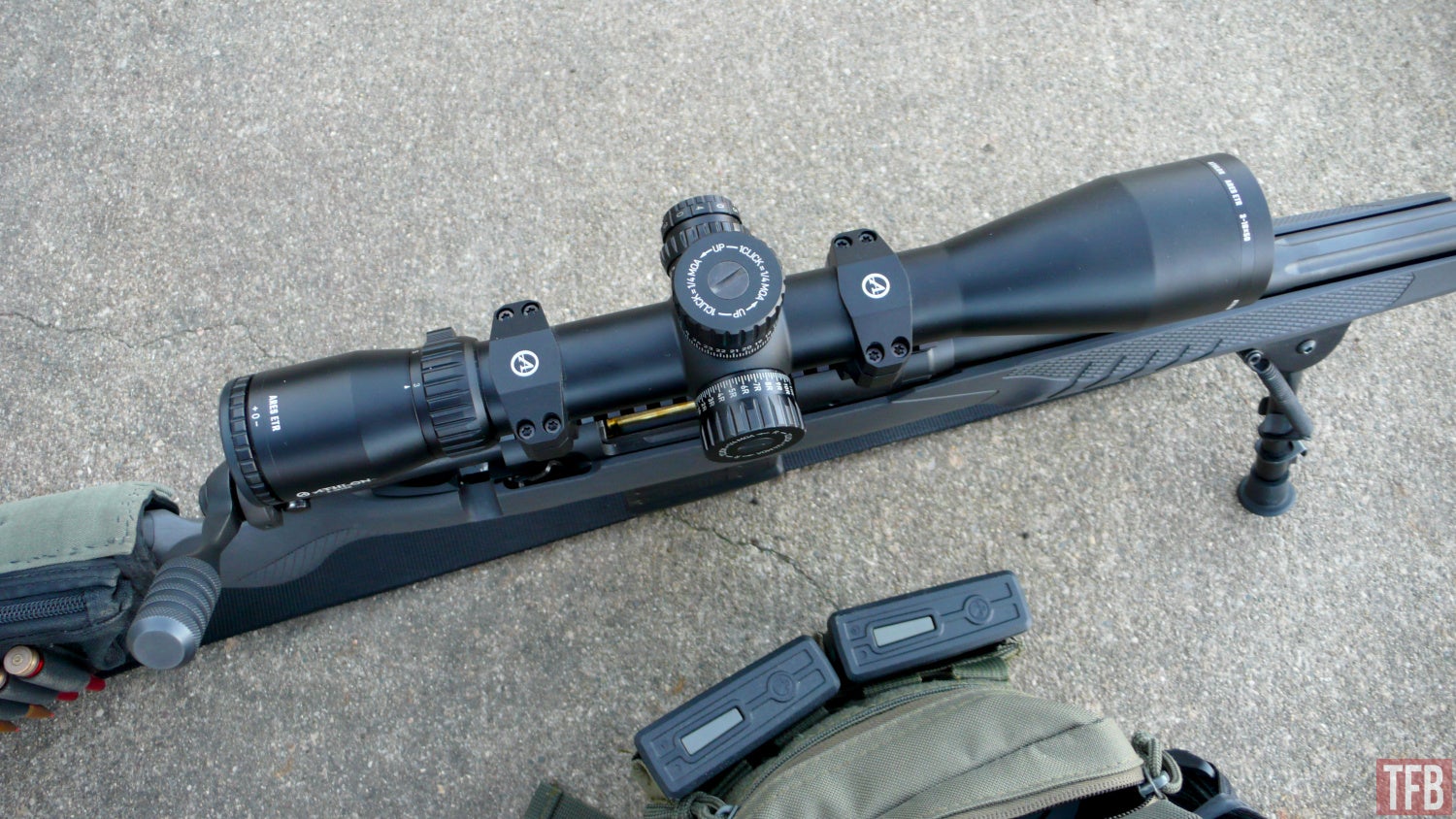
CONCLUSIONS
The Athlon Ares ETR 3-18X50mm APLR6 FFP IR MOA UHD (whew, that’s a mouthful) was a pleasant upgrade over the previous scopes I’ve tested. To be fair, the other scopes, while good in their own way and fully useful, were mostly budget optics, whereas the Athlon ARES was a step above and I can certainly say it’s one of the best rifle scopes I’ve ever used. Athlon lists the ARES as tested at $1,199.99 on their website, so price-wise it’s in the middle of the road for what they offer. I wouldn’t hesitate to use this as a duty rifle optic and I’ll see about purchasing this one. The hiccup with the Athlon Precision Rings was a slight setback, but it was quickly remedied and they haven’t budged since.
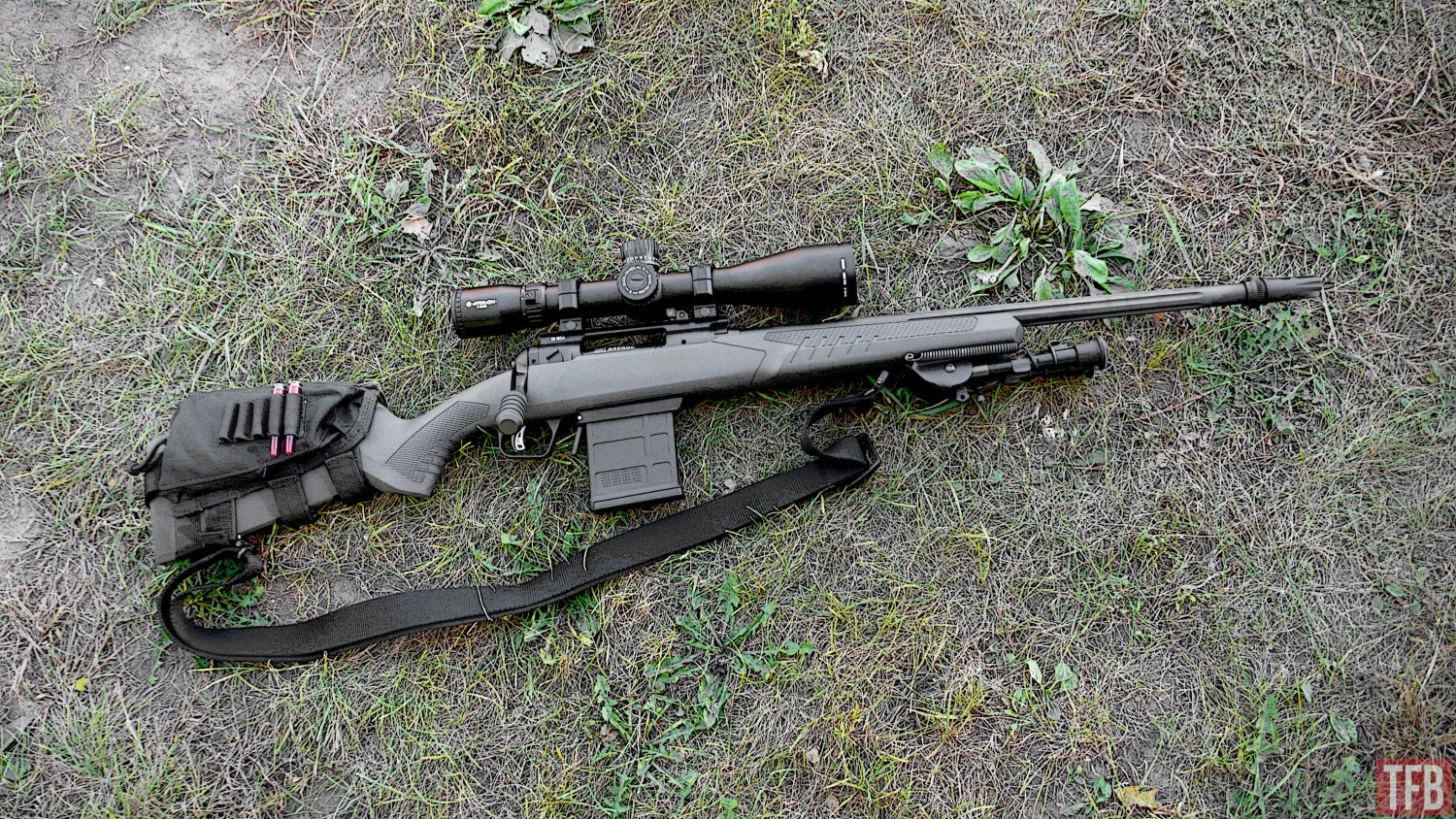
Athlon was kind enough to send me a couple other scopes to test and evaluate, so stay tuned to TFB for those pending reviews as well. What do you think about the model as tested? If you’ve already been using the Athlon ARES in 3-18x or one of their other models, how has your experience been?
We are committed to finding, researching, and recommending the best products. We earn commissions from purchases you make using the retail links in our product reviews. Learn more about how this works.
 Your Privacy Choices
Your Privacy Choices
